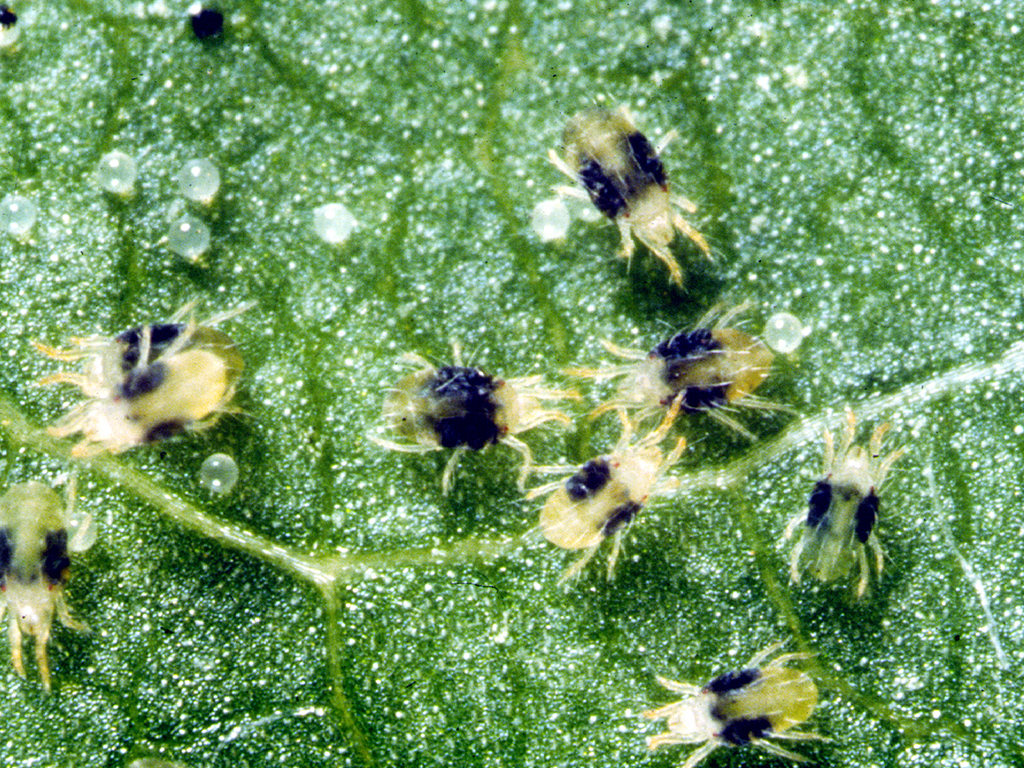
Two spotted spider mite, Tetranychus urticae, adults and eggs. Photo courtesy of CSIRO. | Download this photo.
Tiny pests causing big headaches for gardeners
Spider mites can be controlled, if you work at it
July 17, 2017
MANHATTAN, Kan. — While the extremely hot weather may be giving your garden plants a case of the “blahs,” they may also be fighting a nearly invisible pet problem.
Spider mites are tiny dark-colored creatures that live on the undersides of plant leaves. Neither insects nor arachnids, these arthropods get the “spider” in their name from the protective webbing they create when they start feeding on the leaves.
“An early symptom associated with spider mite damage is referred to a ‘stippling’ and/or ‘speckling’,” said Raymond Cloyd, K-State Research and Extension specialist in horticultural entomology, “because spider mites feed on the chlorophyll of plants, thus removing the green content.”
As the infestation progresses, the plant will begin to look droopy — its leaves will be limp, hanging, with a wilted appearance. Larger stems might even be leaning to one side.
The easiest way to test for spider mites is to use a blank, white piece of printer paper. Hold the paper under a leaf, and then tap the stem of the leave with your finger. Don’t shake the leaf — just tap it. If small black specks fall onto the paper, watch for movement; if they move, you have spider mites.
Cloyd’s first suggestion is to try to dislodge the mites with a forceful spray of water. Because the mites hang out on the undersides of the leaves, you’ll have to bend the leaves back, or use a garden hose attachment that allows you to invert the nozzle. The water pressure should be strong, but not so hard that it tears the leaves.
Chemical controls are effective on spider mites — you can choose organic or synthetic formulas. Persistence is the key to payoff, Cloyd said.
“On the organic side, insecticidal soaps or horticultural oils will work,” said Cloyd. “However, you have to have thorough coverage of all plant parts — especially leaf undersides. Repeat applications will be required.”
“Commercially available miticides are also effective, but the same rules apply: cover all plant parts, and make several applications for an effective treatment.”
More details can be found in the K-State Research and Extension publication, “Twospotted Spider Mite: Management in Greenhouses and Nurseries.”

